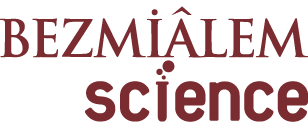ÖZET
Amaç:
Bu çalışmanın amacı koronal yapıyı oluşturan üç farklı yapıyı bir bütün olarak ele alarak protetik restorasyonların en güçlü ve en zayıf noktalarını geriye kalan dental dokular, kompozit rezin ve CAD/CAM materyalleri yönünden incelemektir.
Sonuç:
Kompozit rezin materyalinin tipi, dentin dokusuna ve CAD/CAM restoratif materyallere olan makaslama bağlanma dayanımını etkilemektedir. Ancak CAD/CAM restoratif materyalinin tipi dentin dokusuna olan makaslama bağlanma dayanımını etkilememektedir.
Bulgular:
Kompozit rezin materyallerin dentin dokusuna olan makaslama bağlanma dayanımı için en yüksek değerler EP’de gözlendi (p<0,05). Kompozit rezin materyallerin IPS’ye bağlanma dayanım değerleri LU ve VE’den daha yüksek bulundu. Üç farklı CAD/CAM restoratif materyalinin dentin dokusuna makaslama bağlanma dayanımları istatistiksel olarak benzerdi.
Yöntemler:
Bu çalışmada 70 adet çürüksüz çekilmiş azı dişi, CAD/CAM bloklar [Lava Ultimate (LU), Vita Enamic (VE), IPS e.max CAD (IPS)] ve kompozit rezin materyaller Clearfil Majesty Posterior [CMP], Light Core [LC], Filtek Bulk Fill Posterior [FBP], EverX Posterior [EP] kullanıldı. Dentin ve CAD/CAM kesitleri akriliğe gömüldü. Adeziv materyal olarak Clearfil SE Bond kullanıldı. Kompozit rezin materyaller dentin yüzeyine Teflon kalıp kullanılarak uygulandı. LU ve VE 50 µm Al2O3 ile 10-sn kumlandı. IPS, 20-sn HF ile asitlendi. Yüzeylere Ceramic Primer-2 uygulandı. Kompozit çubuklar (2.3x3 mm) RelyX-U200 kullanılarak CAD/CAM bloklara yapıştırıldı. Ayrıca CAD/CAM çubuklar da dentine yapıştırıldı. Makaslama bağlanma dayanım testi yapıldı. Kırılma tipleri stereomikroskop kullanılarak incelendi. One-way ANOVA ve Tukey Post Hoc testi istatistiksel değerlendirmede kullanıldı.



